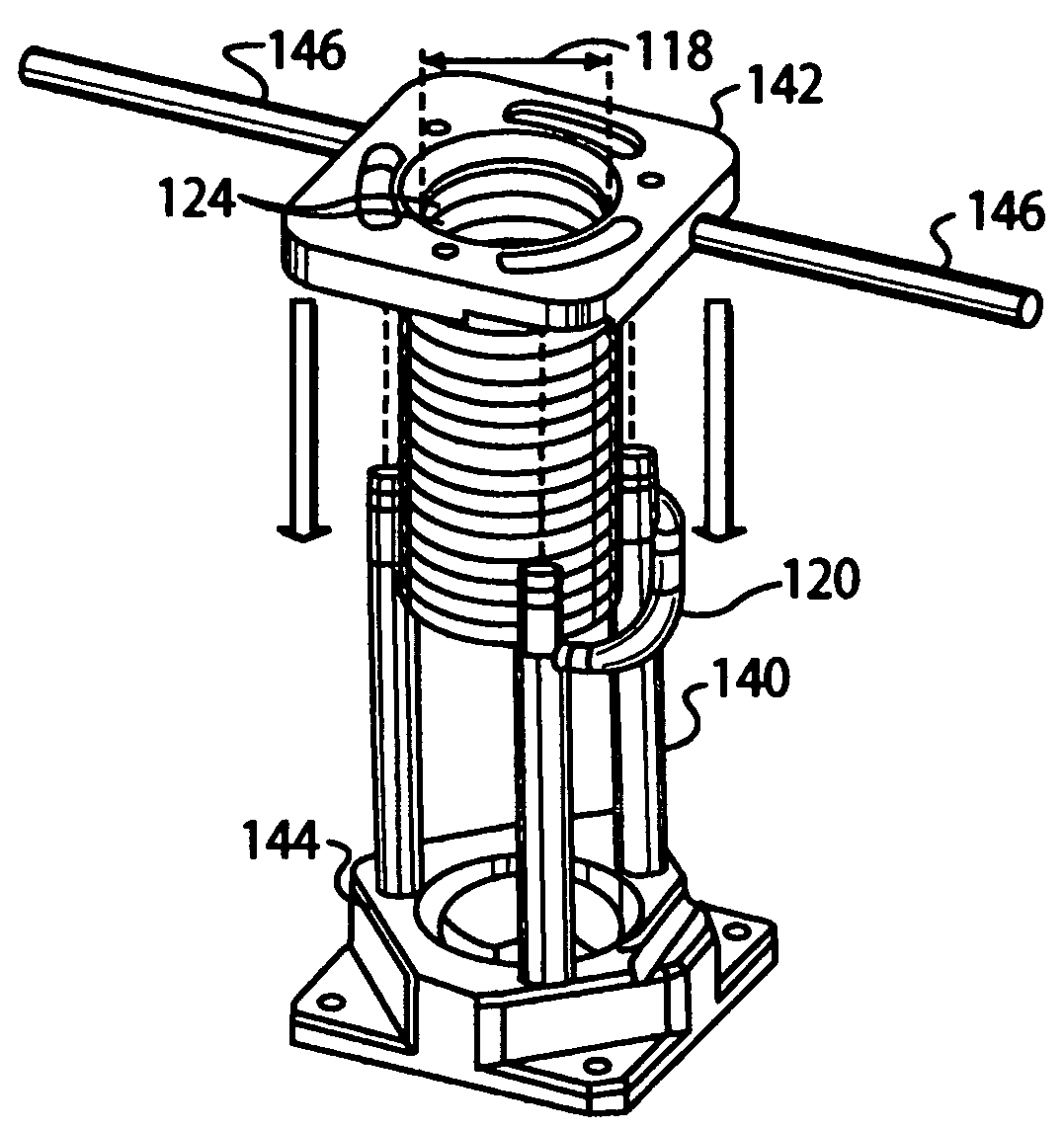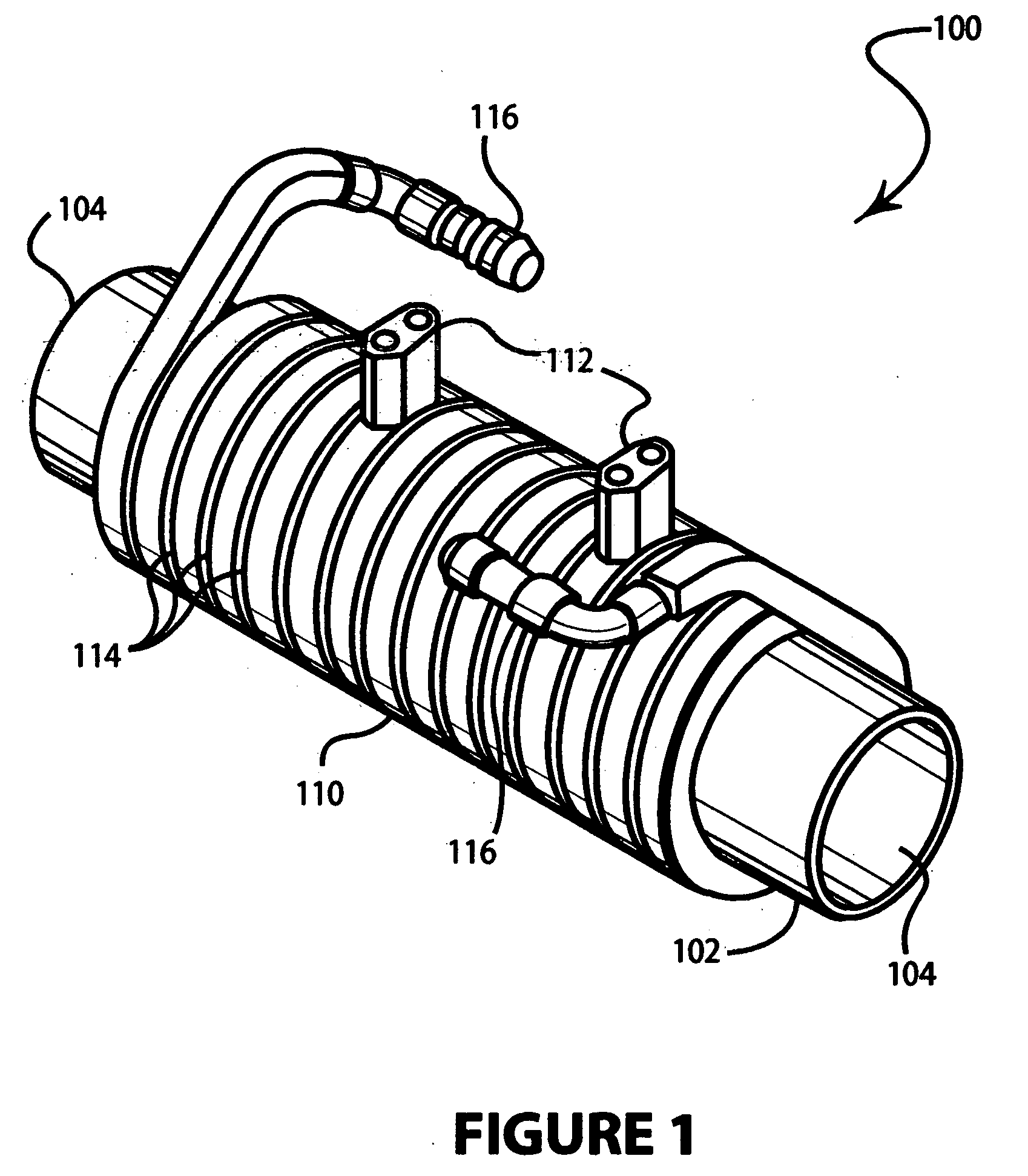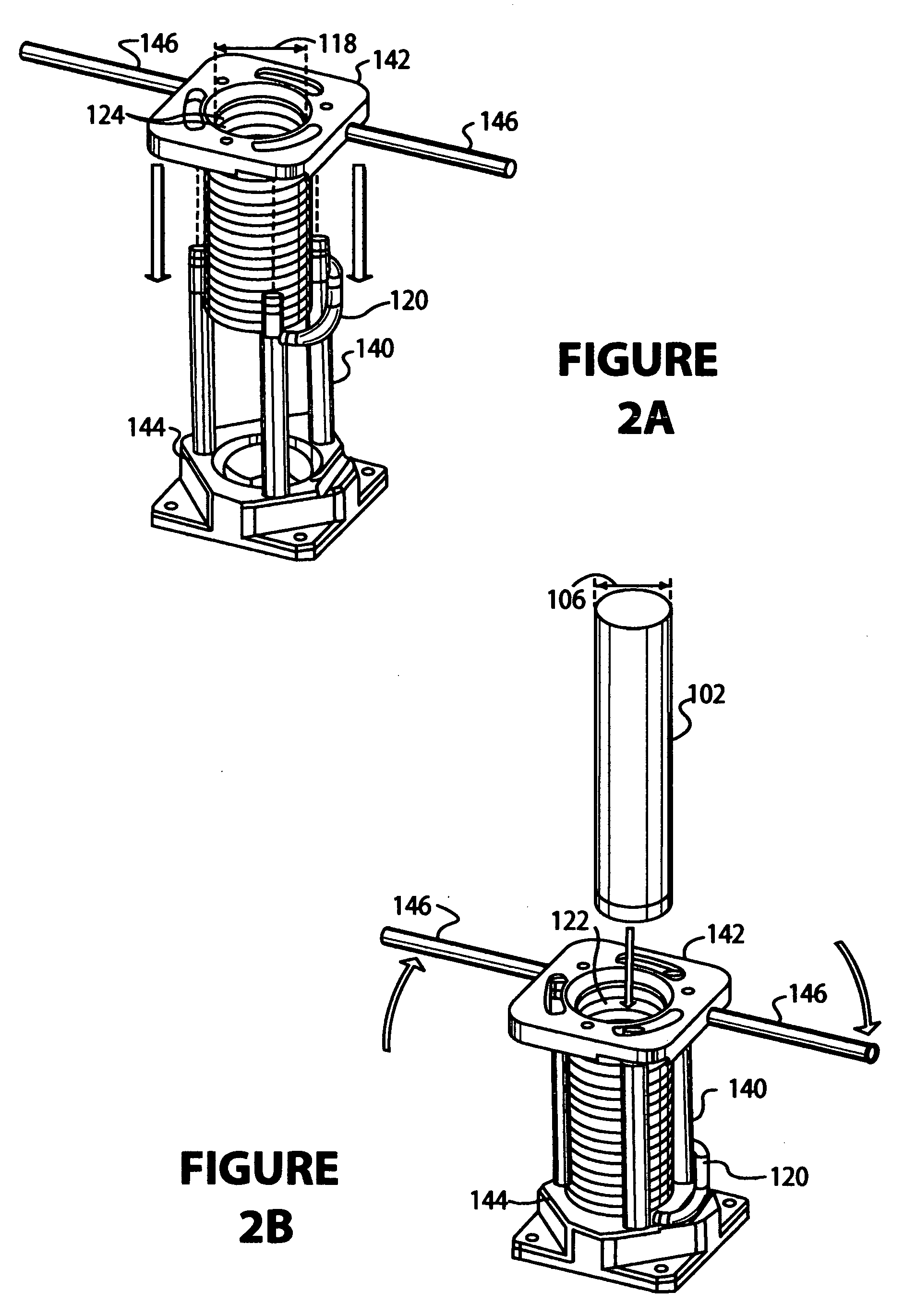Thermal management of dielectric components in a plasma discharge device
a technology of dielectric components and plasma discharge devices, which is applied in the direction of electric discharge tubes, coatings, metal material coating processes, etc., can solve the problems of high internal stress of dielectric components, difficult thermal management, and limiting the performance, range, reliability, or other operating characteristics of plasma devices, etc., to achieve convenient heat extraction, improve heat extraction uniformity, and low viscosity
- Summary
- Abstract
- Description
- Claims
- Application Information
AI Technical Summary
Benefits of technology
Problems solved by technology
Method used
Image
Examples
Embodiment Construction
[0017]FIG. 1 illustrates a plasma source device in accordance with one embodiment of the invention. Plasma source 100 comprises cylindrical discharge tube 102 containing a plasma within. Discharge tube 102 is constructed substantially of a dielectric material such as quartz, alumina, aluminum nitride, or other structural dielectric suitable to the chemistry of the discharge environment within the tube. Discharge tube 102 is open at both ends 104 to allow for gas inlet and exhaust, as for example in an inline gas processing application. Alternatively, the plasma tube may be configured as a sealed vacuum chamber having metered inlet and exhaust ports for feed and processing gases. Not shown are other features that may typically be included in a plasma processing device such as vacuum pumping manifolds, gas delivery connections or manifolds, plasma ignition electrodes or other devices, and mechanisms for workpiece mounting, transfer, or electrical biasing.
[0018] Disposed coaxially abo...
PUM
| Property | Measurement | Unit |
|---|---|---|
| diameter | aaaaa | aaaaa |
| dielectric | aaaaa | aaaaa |
| residual compressive force | aaaaa | aaaaa |
Abstract
Description
Claims
Application Information
 Login to View More
Login to View More - R&D
- Intellectual Property
- Life Sciences
- Materials
- Tech Scout
- Unparalleled Data Quality
- Higher Quality Content
- 60% Fewer Hallucinations
Browse by: Latest US Patents, China's latest patents, Technical Efficacy Thesaurus, Application Domain, Technology Topic, Popular Technical Reports.
© 2025 PatSnap. All rights reserved.Legal|Privacy policy|Modern Slavery Act Transparency Statement|Sitemap|About US| Contact US: help@patsnap.com



